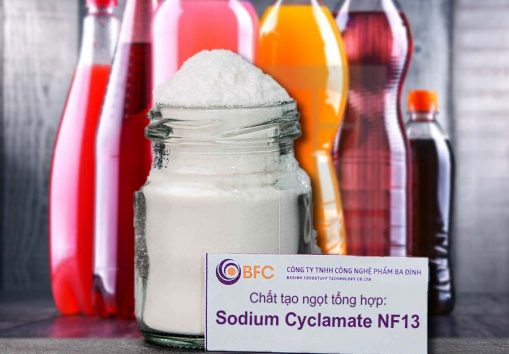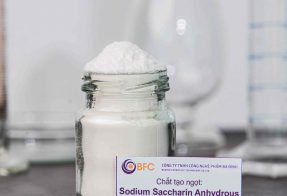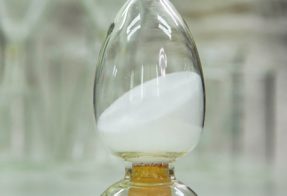Food group code
Manufactured sweeteners
E952 (iv)
Cyclamate is commonly used in two forms of sodium (sodium cyclamate or sodium cyclamate), calcium (calcium cyclamate) and is commonly known as chemical sugar or artificial sweetener (1).

1. Overview of sweetener cyclamate
1.2. International index:
E952(i) – acid cyclamate;
E952(ii) – calcium cyclamate
E952(iv) – sodium cyclamate
1.4. Category: synthetic sweeteners
1.5. Chemical formula
- Sweetener sodium cyclamate: C6H12NNaO3S
- Calcium cyclamate: C12H24CaN2O6S2.2H2O
- In addition, the sweetener cyclamate also exists in the form of acid cyclamate, but is less common than the two salts of cyclamate.

- Crystalline or crystalline powder, white, odorless, intensely sweet taste
- Among the groups of artificial sweeteners, compared to saccharin, aspartame and sucralose, the sweetener sodium cyclamate (E952) has the lowest sweetness. At high concentrations there is a slightly bitter aftertaste but less than that of saccharin or acesulfame potassium.
- The sweetness of sodium cyclamate is higher than that of calcium cyclamate (2).
- Both sodium cyclamate and calcium cyclamate are highly soluble in water, neutral after dissolving the liquid.
- Virtually insoluble in benzene, chloroform ethanol and diethyl ether. At a concentration of 10%, there is a pH: 5.5-7.5.
- The cyclamate sweetener is stable to heat and acidic and alkaline environments.
- Easy to store, when exposed to the air for a long time does not absorb moisture, does not ferment.
2. Application and use rate of sweetener cyclamate E952 in food industry
- Application:
Sweetener cyclamate is widely used in the production of soft drinks, ice cream products, butter, cakes, sauces, fruit marinades, syrups, chewing gum, dietary food production…
E952 is often used in conjunction with other artificial sweeteners, especially saccharin, commonly a mixture with a 10:1 cyclamate:saccharin ratio that will mask the taste of both sweeteners.
- Usage rate:
However, after a period of practical testing, the Ministry of Health has issued a very detailed guidance circular on sweeteners cyclamate (3). This proves that sodium cyclamate sweetener is completely safe for consumers if used correctly and in the right dosage.
The permissible dosage of E952 cyclamate sweetener in the food industry is from 250-3000 mg/kg depending on the type of food.
3. Packing
- Product name BFC distributes: sodium cyclamate peacok
- Packing: 1kg / 1 pack, 25 packs / 1 carton.
- Packaging material: 2-layer PE, standard carton.


4. Shelf life and storage
- Shelf life: 03 years from the date of manufacture printed on the package
- Preserved in dry, cool place
Our product sweetener sodium cyclamate (E952iv) is imported from a factory that meets CODEX standards and has been announced according to the order and procedures in Articles 7 and 8 of Decree No. 15/20 18/ND -CP dated February 2, 2018 of the Government detailing the implementation of a number of articles of the Law on Food Safety (4).
Contact BFC immediately at hotline 0243. 715. 3333 (HN) – 0283.849.3321 (HCM) to receive the supply of additives of international and Vietnamese standards at extremely competitive prices.
Reference source:
(1) Official Letter 1058/QLCL-KN 2013 on the use of Cyclamate sweetener issued on June 28, 2013.
(2) FAO trial with cyclamate http://www.fao.org/fileadmin/user_upload/jecfa_additives/docs/Monograph1/additive-399-m1.pdf
(3) Circular 24 regulating the management and use of food additives issued by the Ministry of Health on August 30, 2019, pages 268-272.
(4) Self-declaration No. 27/2019/0101072018-CBPH dated 18/04/2019 of BFC on sodium cyclamate peacok (https://bfchem.vn/ban-tu-cong-bo-sodium-cyclamate-peacok- (April 18, 2019)-219.html





